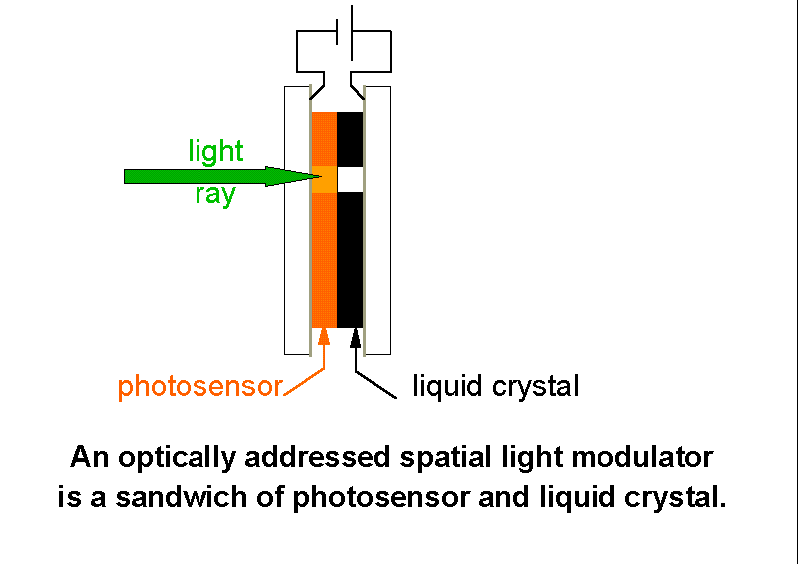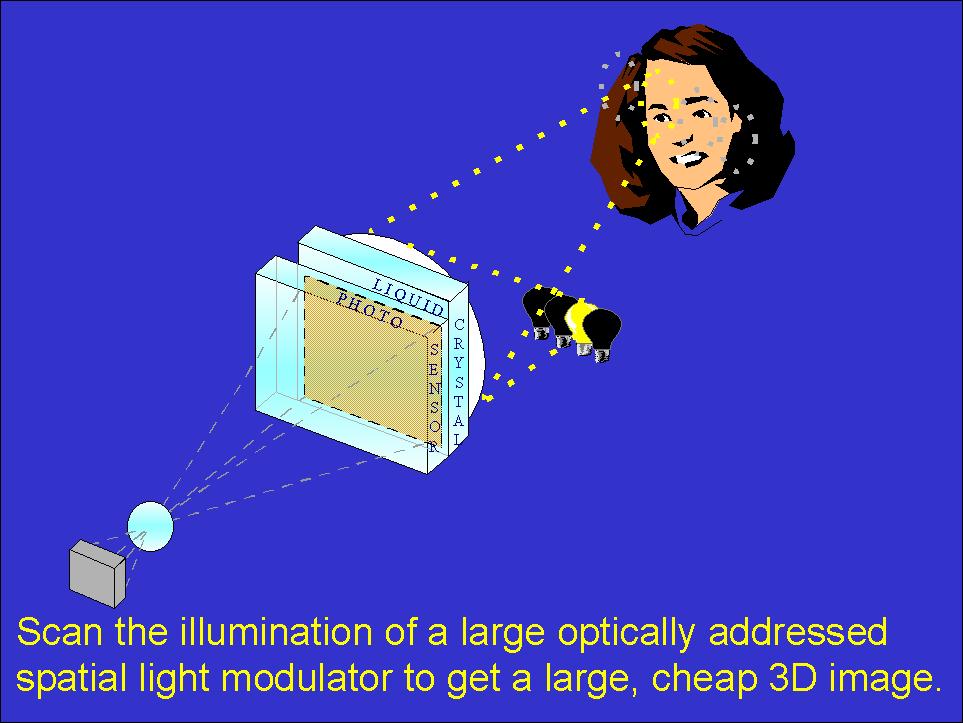

We image a video projector onto the photosensitive side of the optically addressed spatial light modulator, and the projected image is transferred into the liquid crystal. The combination behaves like a liquid crystal display, but optically addressed spatial light modulators are simple devices which need no lithography, so can be made large at low cost.
